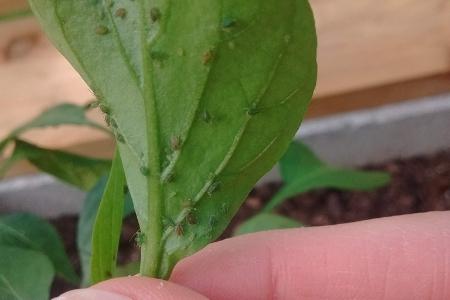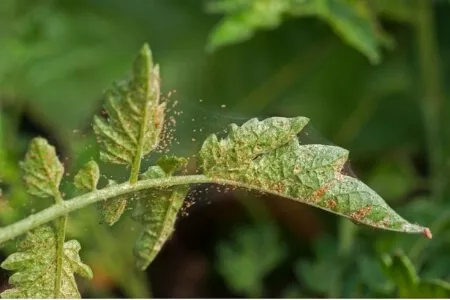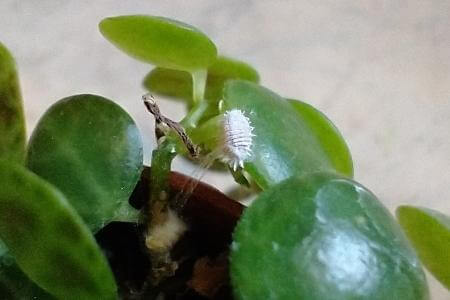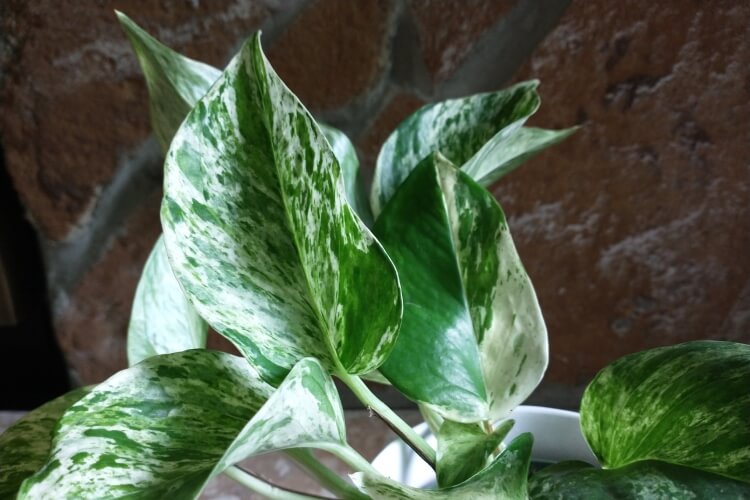Pothos is an easy plant to get hooked on. Once you have one, more just seem to keep finding their way into your home. And one pothos variety that you just can’t overlook is the striking Marble Queen pothos.
Marble Queen pothos features a roughly even balance between green and creamy white variegated leaf sections, with a delicate marbling pattern that gives the plant its name. As a vining plant, the stems on a Marble Queen can reach up to 5 feet in length. The Marble Queen prefers indirect lighting and infrequent watering, and it makes a stunning and easy-care houseplant that also helps to purify the indoor air.
In this article, you’ll learn more about Marble Queen pothos care and how to propagate this lovely plant to grow your collection. We’ll also take a look at troubleshooting care problems and answer a few common questions.
Let’s get started!
Plant Type: | Epiphyte |
Native Habitat: | Australia and Southeast Asia |
Botanical Name: | Epipremnum aureum |
Growth Pattern: | Vining |
Watering: | When soil is dry 2 inches deep |
Light: | Bright, indirect light |
Soil: | Well-draining potting soil |
Temperature: | 65-75 degrees F |
Humidity: | Tolerates average room humidity |
Potential Problems: | Overwatering, leaf discoloration, pests |
Repotting: | Every 1-2 years, in the spring |
RELATED: To see another beautiful pothos variety, stop by our post where we discuss how to care for the lovely Snow Queen.
Table of Contents
Marble Queen Pothos Background
Marble queen pothos, botanical name Epipremnum aureum, is a perennial vine that’s native to Australia and Southeast Asia. It grows in the rainforests there, using aerial roots to attach itself to trees and other plants as it climbs toward the sun.
Considered a tropical plant, it’s popular with many plant lovers for its abundance of beautiful leaves. It grows as a trailing vine that can reach up to 5 feet long, and Marble Queen is perfect for a hanging basket or draping over the edge of a tall bookshelf. If you’d prefer a bushier shape, you can also train your Marble Queen to climb a moss pole or a trellis.
The marble queen pothos is known for its striking green and white variegated leaves that start out green but develop to half green and half white.

Marble Queen pothos’ sibling is the Snow Queen. These two plants are fairly similar- so much that it can sometimes be difficult to tell them apart! Check out our article comparing snow queen and marble queen pothos for more information.
Marble Queen Pothos Care
Marble queen variegated pothos is easy to care for as long as you maintain a few things for optimizing its growth. Let’s look at the basic requirements for marble queen pothos care.
Appropriate Pot Size and Type
From ceramic to terra cotta, the type of pot doesn’t matter as much as the size. Choose a pot that’s about 2 inches larger in diameter than the root ball. This gives your plant enough room to grow while still being small enough to limit extra soil that leads to excessive moisture.
And good drainage is a must. Like all pothos, Marble Queen prefers its soil to get mostly dried out between deep waterings, and if you don’t have an escape route (i.e. drainage holes) for excess water, you can quickly run into problems with root disease and decay.
Soil
The best soil for marble queen pothos should drain well and have some nutrients for healthy growth. While any houseplant indoor soil is good, I personally prefer Espoma potting mix that’s available from Amazon and most gardening stores and nurseries.
You can also make your own with equal parts potting soil, perlite and orchid bark. As long as it’s light and drains well, your marble queen will love it.
Light
Marble queen pothos prefers moderate mounts of bright, indirect light. This is thanks in part to the variegation, lower levels of chlorophyll (the green parts) and also because it is a fast grower.
The more sunlight it receives, the more variegation you’ll see. You can place it in a bright corner of a room or hang it in an east or west-facing window to help it stay bright and green. I have mine just off to the side of a south-facing window, where it’s bright but not in direct light, and my plant is doing well!

Water
Marble queen Epipremnum aureum typically needs water about every 7-10 days, and in some climates, you may only need to water every 2 weeks or so.
If it’s warm you’ll want to water it a little more often, but it’s always a good idea to check soil moisture first. Let the soil dry out between waterings- the top 2 inches of soil should be dry to the touch before watering again.
You can use your finger to check or consider buying a soil moisture meter.
Ambient Temperature
Marble queen likes warm temperatures between 65 degrees and 85 degrees Fahrenheit, so the temperature in most homes is perfect.
If you live in USDA zones 10-11, you can keep your marble queen outdoors, but be vigilant for any freak cold snaps that might occur.
Humidity
Marble queen pothos humidity needs are not very high, even though it’s a tropical plant. It does well with levels between 30-50%, which is where most homes fall.
But if you notice crispy leaf tips/edges or a downward leaf curl, it’s often a sign that your plant needs a little more humidity. One way to treat those problems is by misting.
Now, this is a controversial topic among houseplant lovers: Whether to mist your plants or not. Some people are very much against misting, due to concerns about water droplets sitting on the leaf surface and causing brown spots or mildew.
I personally am pro-misting, and I find that my plants (Marble Queen included) look perkier and healthier with a light spray every few days. But it’s never a good idea to expose your plant to any water during the cooler, darker nighttime hours, so I always make sure to do my misting in the morning or very early afternoon.
Use a spray bottle that produces a fine mist. Hold your spray bottle a few inches away from your Marble Queen, and try to give each leaf a light spray.

Fertilizing
Marble queen pothos typically doesn’t require fertilizer, especially if it’s growing in good-quality soil.
If you do decide to fertilize, use a balanced NPK fertilizer like this one from Espoma. Follow the package instructions and fertilize once monthly during the growing season (March through October).
Pruning
As a rapidly growing vine, you can prune Marble Queen pothos to help its appearance and prevent it from getting too leggy.
Trim a trailing vine at a leaf node and plant it right back in the soil to make your pothos look fuller. Pruned vines can also be placed in water to propagate new plants if you so desire, which I highly recommend!
Support
Marble pothos plant vines can grow to be quite long, so supporting the vines can be a good idea.
You can use a moss poles or drape the vines over a bookshelf or hanging picture. I’ve also seen people use twist ties loosely tied around a vine, then hung on a pushpin to get the vines off the floor.
Seasonal Dormancy
As the weather cools off, you’ll notice the growth of your marble queen pothos slows down. Its dormancy period is from roughly November until March, when it will not have any new growth.
During this time, your plant is resting and just maintaining the status quo, so it doesn’t need much attention at all. Don’t fertilize during dormancy, and plan to reduce watering by about half. But once things start warming up again it’ll show signs of new growth!

Propagating Marble Queen Pothos
Marble Queen pothos is easy to propagate, and that’s good news- you can never have too many plants in your own collection or to give away to friends. You can propagate your Marble Queen through a couple of different methods:
- Stem cuttings
- Air layering
All successful propagations begin with healthy stem, leaf and node tissue. Nodes are where a new leaf branches off from the main stem, and this is where your plant will form new roots to grow into an independent plant.
In this photo, I’ve marked three node junctures on my Marble Queen:

Propagating Mable Queen Pothos from Stem Cuttings
To take a healthy cutting, find a long stem on your plant and identify the nodes. Your cutting should be about 4-6 inches in length and have at least two nodes with healthy leaves attached.
Cut the stem just below a node, then remove the lowest set of leaves. This exposes the node tissue so new roots can grow out.
Now that you have your cutting, you can stimulate new root growth in either soil or water.
Rooting a stem cutting in soil:
- Fill a small pot (3-4 inches in diameter) with moist potting soil, and use a pencil or a chopstick to make a hole in the center. Carefully insert your cutting into the hole and gently pinch the soil around the stem to hold it upright.
- Place your cutting where it will get plenty of indirect sunlight, and water when the top inch of soil is dry.
- Within a week or two, roots will develop and you’ll start seeing new growth. You can test for new roots by gently tugging on the cutting- if it has resistance, that means new roots! If it’s still loose in the soil, give it another few days before testing again.
Rooting a stem cutting in water:
- Fill a small, clean jar with filtered water and place your cutting inside, making sure there are no leaves under the water level.
- Set your jar in a window that’s bright but not in direct light. Change out the water about once per week or when it starts to get cloudy.
- Within a week or so, you’ll see roots growing from the leaf nodes. When the roots are about 1 inch long, you can pot your cutting in moist potting soil. Pothos actually grow well in water, so if you’d like, you can also keep your Marble Queen in the jar for the long term.
Propagating Marble Queen Pothos with Air Layering
Here again, you’ll need a healthy node, but the actual cutting step comes a little later. The benefit of air layering is that you can ensure healthy root growth before you make any cuts to your plant.
- Identify a leaf node on a vine, but don’t cut. Place some moist potting soil or sphagnum moss around the node, then cover in plastic wrap. Secure the plastic wrap with twist ties or a string.
- Unwrap every few days to add water as needed and check on root growth from the node.
- After about two weeks, there should be enough roots growing to clip the stem from the parent vine and pot on its own.

Repotting Marble Queen Pothos
Marble Queen typically needs repotting every 1-2 years to give the roots a little more space to grow and provide a nutrient boost with fresh potting soil. Spring or early summer is the best time to repot since your plant is already in growing mode.
- Find a pot about 2 inches larger than the current pot and make sure there’s proper drainage.
- Water your marble queen a day or two before repotting so it’s not thirsty and the soil doesn’t fall apart or form a solid mass when you remove it from the old pot.
- If you’re working indoors, cover your work surface with a large piece of paper or an old sheet.
- Add a couple of inches of soil to the new pot.
- Gently remove your Marble Queen from its current pot, and brush away as much old soil as possible. Examine the roots, looking for any sections that are soft or discolored. If you see any, trim them away with clean scissors or shears.
- Gently work the root ball open. This makes it easier for your plant to expand its roots in its new home.
- Set the root ball in the new pot, and surround it with fresh soil.
- Wait a couple of days to water your Marble Queen to help it get over and repotting shock. The soil will probably settle after watering, so add more if needed.
If you’d like more details and to see some step-by-step photos, visit our guide to repotting pothos plants.
Potential Problems with Marble Queen Pothos
Marble Queen Epipremnum aureum is pretty low-maintenance, but it’s not immune to problems. We’re going to cover some potential issues as well as how to fix them.
Loss of Variegation
Loss of variegation (the white leaf coloring) can occur if marble queen pothos doesn’t get enough sunlight.
Find a spot in your home where it can get at least 4-6 hours of bright, indirect sunlight or consider using a plant grow light to supplement.
Root Rot
If your marble queen is drooping, the leaves are turning yellow or there’s an odd smell coming from the soil, there may be root rot present. Root rot is a fungal infection that occurs when there’s too much water in the soil or there’s not adequate drainage, keeping the soil too wet and allowing fungus to grow.
To treat the problem, remove the pothos from the pot, wash off all the soil and examine the roots. If you see any brown or black roots or softened roots, trim them off with sharp scissors or gardening shears and rinse the remaining roots with hydrogen peroxide. Be sure to clean your scissors/shears with alcohol before and after trimming to avoid spreading microbes.
Repot your Marble Queen in a new pot with fresh soil and good drainage. If your old pot was a porous material like terra cotta, the fungus could be in the pot itself, and you’ll have to throw it out. If the old pot was non-porous, like plastic, soak it in a 10:1 water/bleach solution for a few hours to disinfect.
Hold off on watering your plant for at least a few days to give the cut roots time to heal. After that, water only when the top 2-3 inches of soil feel dry to the touch.
Discolored Leaves
If your marble queen leaves are turning yellow or brown, this could mean a couple of things.
Yellow leaves typically mean too much moisture or soil nutrient deficiency, but they could also simply be aging leaves. Check that the soil moisture level isn’t too high and there’s good drainage, then try some fertilizer the next time you water.
If the moisture level seems fine and the rest of your plant looks healthy, your plant may just be shedding an old leaf.
Brown spots could be due to not enough water, hard water, or too much fertilizer.
Again, check the soil moisture. If it’s dry all the way through, water your plant thoroughly. Always use filtered or distilled water on houseplants to get things like calcium out, which can lead to brown tips and brown spots.
If you think you may have been heavy-handed with fertilizer, take your plant to the sink and drench the soil 3-4 times to flush the excess fertilizer out. Allow your plant to recover for several days, and resume normal watering when the top 2 inches of soil feel dry.
Going forward, fertilize less frequently and give a smaller dose.
Pests
The most common pests for the marble pothos plant include:
- Aphids
- Spider mites
- Scale insects
- Mealybugs




When you bring home any new plants, look them over for any pests before bringing them indoors or around any other plants. If you spot any of these pests, spray them off with some water or insecticidal soap. I’ve also had good luck with wiping pests away with a cotton swab or cotton ball soaked in rubbing alcohol.
Even after removing all visible pests, check back on your Marble Queen for the next several days. Bugs are experts at hiding, and there may be some more that emerge with time. If you see any more, remove them the same way as before.
Also, consider an organic pest control spray to treat and prevent all of marble queen pothos’ common pests.
Leggy Growth
If your marble queen starts looking too leggy, it may be looking for sunlight. When light is in short supply, the leaves will start to space out as the vines stretch out to a light source, leaving you with a sparse-looking plant.
First, move your Marble Queen to a brighter spot, or use a grow light if you don’t have more natural light available. Also make sure that you water regularly, and add a monthly dose of fertilizer to help your plant produce new growth.
For a quicker fix to a leggy plant, prune back overgrown stems. This improves the overall shape and encourages your plant to produce new growth at the base.
Where to Buy Marble Queen Pothos
Marble queen pothos can be found in many places including your local plant nursery, home improvement store and even the flower section of your grocery store. It’s typically an inexpensive plant, especially if you can find a young, small one. I saw a beautifully full, mature Marble Queen in a hanging basket in one of my local greenhouses, and it was a bit more expensive.
I ordered my Marble Queen online, which is always the best option for finding the plant you want when you want it.
- California Tropicals on Amazon.
- PERFECT PLANTS on Amazon.
- Etsy has a wealth of reputable plant sellers offering Marble Queen plants of all sizes.
Frequently Asked Questions about Marble Queen Pothos
Final Thoughts
Marble queen variegated pothos is one of the more strikingly beautiful houseplants that’s available just about everywhere. It’s so easy to take care of, grows quickly, detoxifies the air and adds a lovely splash of color to any room. I recommend at least one in every houseplant collection!
We want to hear from you! Do you have any more questions about caring for a Marble Queen pothos? Are there any other tips you’ve picked up in caring for one of these plants yourself? We all learn best in a community, so please share your thoughts and experiences in the comments!

